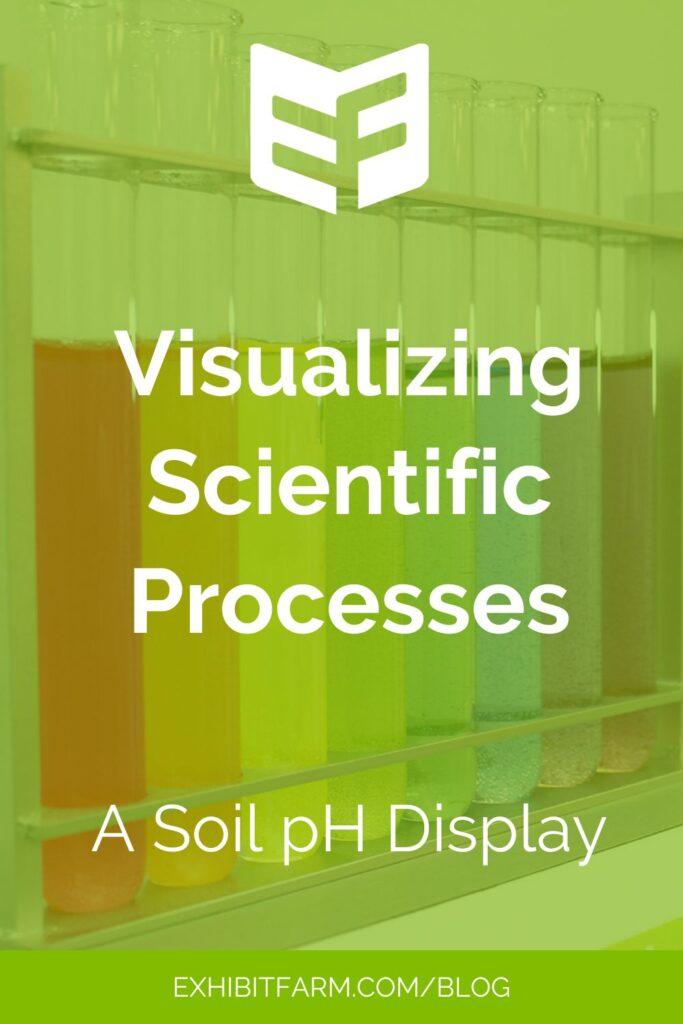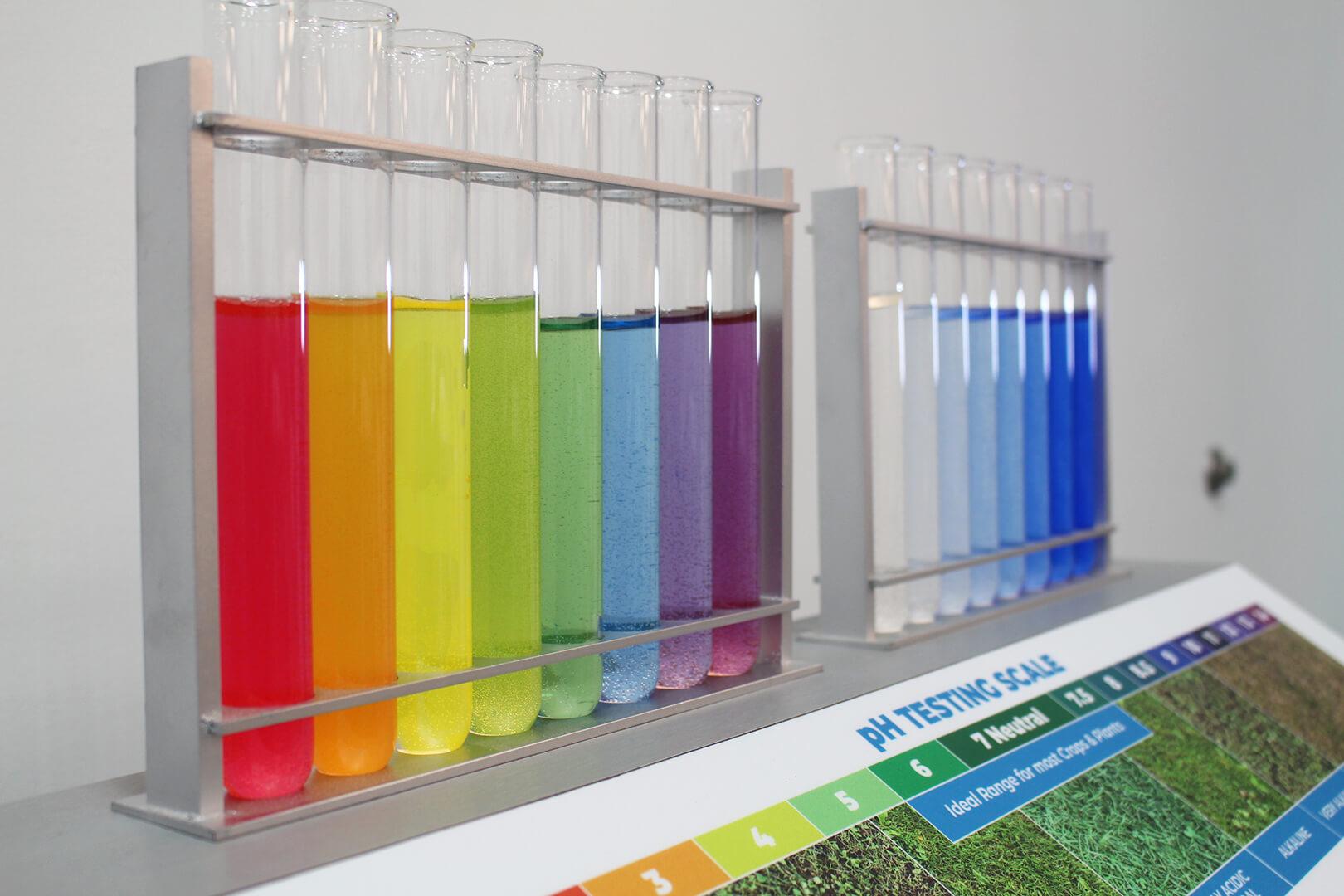
A row of rainbow-colored test tubes might sound like a fifth-grade science demo, but there really are scientific processes that look like this. For instance, a display of soil pH tests.
Our clients at Midwest Laboratories offer a vast variety of different soil tests. Their detailed information can really help farmers understand the chemistry of their soil.
But for farmers to benefit, they have to decide to send soil samples in for testing in the first place. And giving potential clients a peek into the testing process helps them understand the benefits these tests offer. So Midwest Labs asked us to create a display to help potential clients visualize the process and the benefits of two particular types of soil tests.
Two Different Soil Tests
Phosphorus is one of the top three nutrients for crop growth. And without a test to see how much phosphorus is already in the soil, farmers might apply too much or too little in their fertilizer. Too much, and the extra phosphorus could wash away and pollute nearby rivers. Too little, and the crops could be stunted.
Our row of blue test tubes shows several possible outcomes of the phosphorus test. Some solutions are almost clear, representing very little phosphorus. Others range from a light cornflower blue to a dark blue-jean color, showing medium or high levels of phosphorus. Besides being eye-catching, it gives farmers an idea of what their results might look like and helps them picture the process.
The prettiest part of the display is the rainbow test tubes, of course. That part of the display represents a soil pH test, telling farmers whether their soil is more acidic or more alkaline. Different pH values result in different colors — acid turns test solutions red, while alkaline chemicals fall towards the blue end.
Soils that are too far towards either end of the spectrum need to be treated to get their pH closer to neutral. Otherwise, plants can’t grow very well. So it’s important for farmers to know exactly where their soil’s chemistry falls on the pH spectrum.
Using the Soil pH Display
Since Midwest Labs wanted to take their display to a variety of events, we made sure it would be safe to transport. The test tubes aren’t actually filled with water — it’s a resin solution that our team dyed to the correct color. The tubes look accurate, but there’s no danger of spilling them.
Below the racks of test tubes, informational graphics explain what the colors of the phosphorus and pH tests represent. That way, Midwest Labs’ sales reps don’t need to stay with the display all the time. If they have to step away, visitors can still understand what the tests do and what the results mean.
Now, instead of leaving the soil testing process mysterious, Midwest Labs can invite farmers to become more familiar with the tools available to them. And that helps farmers feel more confident in their understanding of their soil and the management decisions they make based on that.
You can see more photos of Midwest Labs’ display in our collection of custom products.
